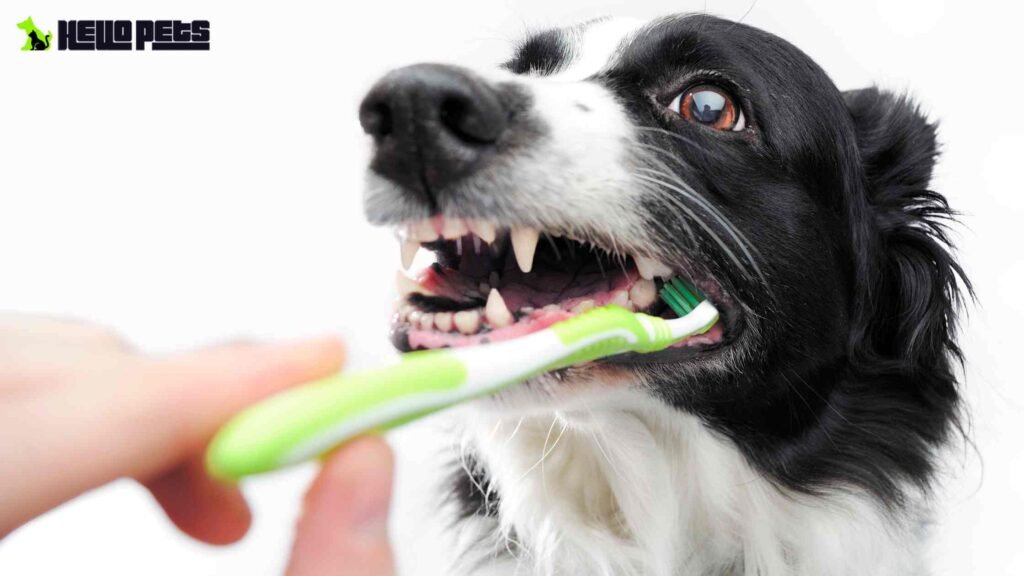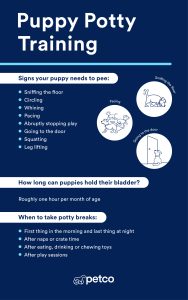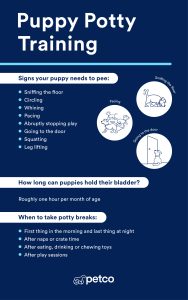Taking care of your dog’s teeth might seem tricky, but it’s one of the best things you can do for their health. If you want to keep your furry friend’s smile bright and avoid costly vet visits, learning how to brush dog teeth the right way is key.
In this guide, you’ll discover simple steps that make brushing easy and stress-free—for both you and your pet. Ready to protect your dog’s teeth and boost their overall well-being? Let’s get started!
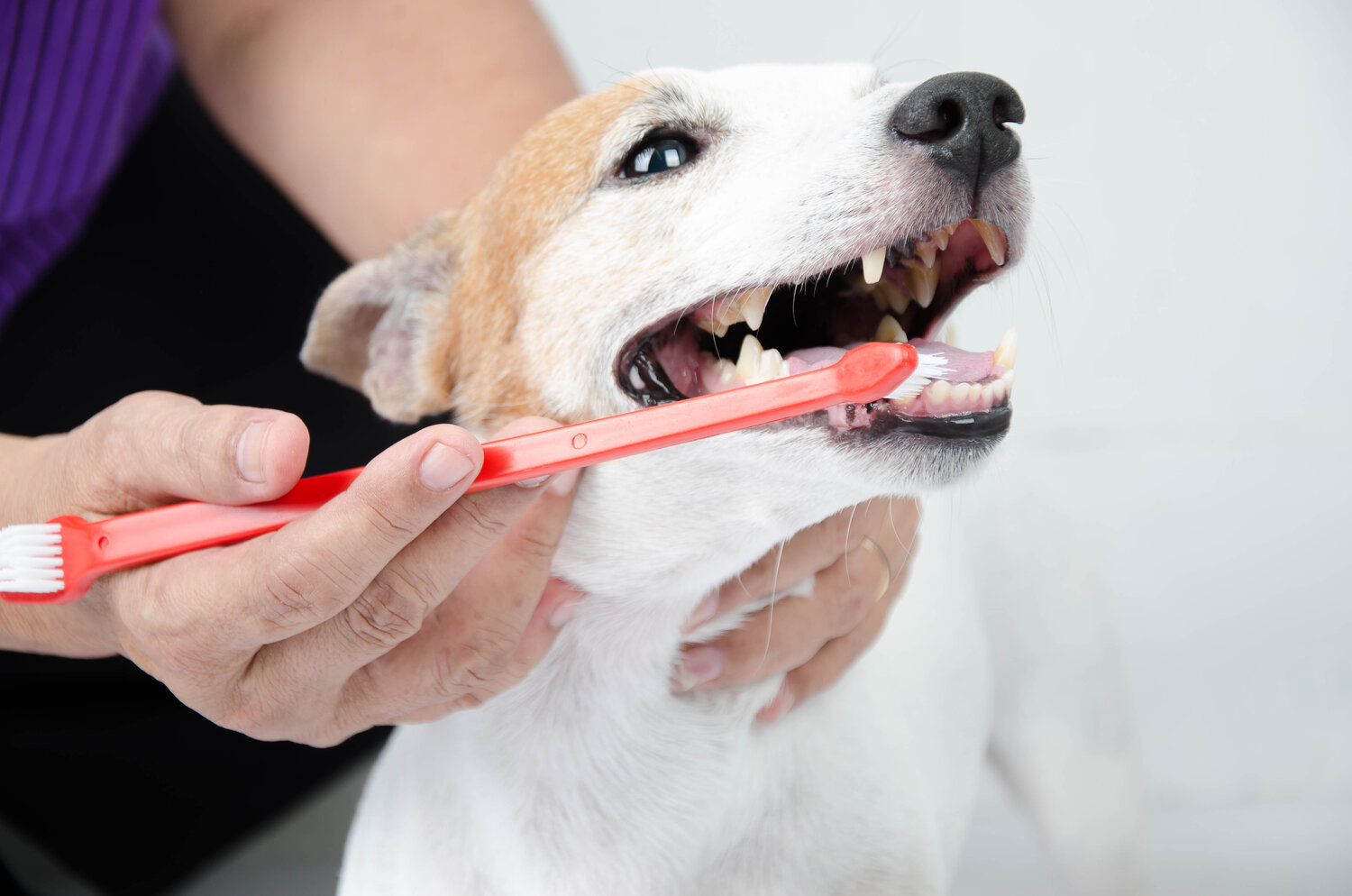
Credit: www.woofpurnayvet.com.au
Benefits Of Brushing Dog Teeth
Brushing your dog’s teeth offers more than just fresh breath—it plays a crucial role in keeping your pet healthy and happy. Regular brushing helps prevent dental problems that can lead to pain and costly vet visits. You might wonder how much impact a simple daily habit can have, but the benefits extend far beyond what meets the eye.
Improved Oral Health
Brushing removes plaque and food particles that build up on your dog’s teeth. This reduces the risk of tartar formation and gum disease. Healthy gums mean your dog avoids infections that can cause discomfort and tooth loss.
Prevention Of Bad Breath
Have you noticed your dog’s breath sometimes smells unpleasant? Brushing helps eliminate the bacteria responsible for bad breath. Keeping your dog’s mouth clean makes cuddling and close moments much more enjoyable for both of you.
Reduced Risk Of Serious Health Issues
Did you know poor oral hygiene in dogs can affect their heart, liver, and kidneys? Bacteria from infected gums can enter the bloodstream and cause serious problems. Brushing helps keep these risks at bay and supports overall wellness.
Cost Savings On Veterinary Care
Regular brushing decreases the chance of expensive dental procedures. Preventing dental disease means fewer trips to the vet for painful treatments or extractions. You save money and spare your dog unnecessary stress.
Strengthened Bond Between You And Your Dog
Taking time to brush your dog’s teeth builds trust and comfort. Your dog learns to enjoy this routine, deepening your connection. Isn’t that a great reason to add tooth brushing to your daily care?
Choosing The Right Tools
Choosing the right tools for brushing your dog’s teeth can make a huge difference in how smoothly the process goes. The right toothbrush and toothpaste not only clean effectively but also keep your dog comfortable and willing to cooperate. Think about your own experience—would you want to brush with a stiff brush or unpleasant paste? Your dog feels the same.
Dog-friendly Toothbrushes
Dog toothbrushes come in various shapes and sizes designed to fit different mouths comfortably. Some have angled handles to reach tricky spots, while others have soft bristles to protect sensitive gums.
Finger brushes are a popular choice, especially for dogs new to teeth brushing. They give you more control and let your dog get used to the sensation gently.
Consider the size of your dog when picking a toothbrush. A small breed needs a tiny brush, while a larger dog requires something bigger to cover more surface area. Have you noticed your dog’s chewing style? That can help you decide if a sturdier brush is better.
Selecting The Best Toothpaste
Human toothpaste is a no-go; it contains ingredients that can upset your dog’s stomach. Instead, pick toothpaste made specifically for dogs. These come in flavors like poultry, peanut butter, or beef, which can make brushing more appealing.
Enzymatic toothpaste helps break down plaque and fights bacteria, making it a strong choice for dental health. You might want to try a few flavors to see which one your dog prefers—this can turn brushing into a treat rather than a chore.
Does your dog resist brushing? Toothpaste that doubles as a tasty reward can change their attitude quickly. Have you ever thought about how flavor might motivate your dog to open their mouth more willingly?
Preparing Your Dog For Brushing
Getting your dog ready for teeth brushing is a key part of making the process smooth and stress-free. Dogs can be sensitive about their mouths, so taking time to prepare them builds trust and cooperation. You don’t want your dog to resist or fear the toothbrush before you even start.
Creating A Calm Environment
Choose a quiet spot where your dog feels safe and relaxed. Avoid busy or noisy areas that might distract or stress your pet. Soft lighting and a comfortable surface, like a favorite blanket or mat, can help your dog settle down.
Speak to your dog in a gentle, reassuring voice. Your calm energy will encourage your dog to stay relaxed. Remember, a few minutes of calm before brushing can make a big difference in your dog's behavior.
Introducing The Toothbrush
Let your dog sniff and explore the toothbrush before you try to use it. Hold the brush out during playtime or treat sessions so it becomes a familiar object, not a threat. You might even dip the brush in something tasty like chicken broth to create a positive association.
Start by gently touching your dog’s lips and teeth with your finger before using the brush. This small step helps your dog get used to mouth contact. Once your dog is comfortable, try brushing a few teeth at a time, praising often to keep things positive.
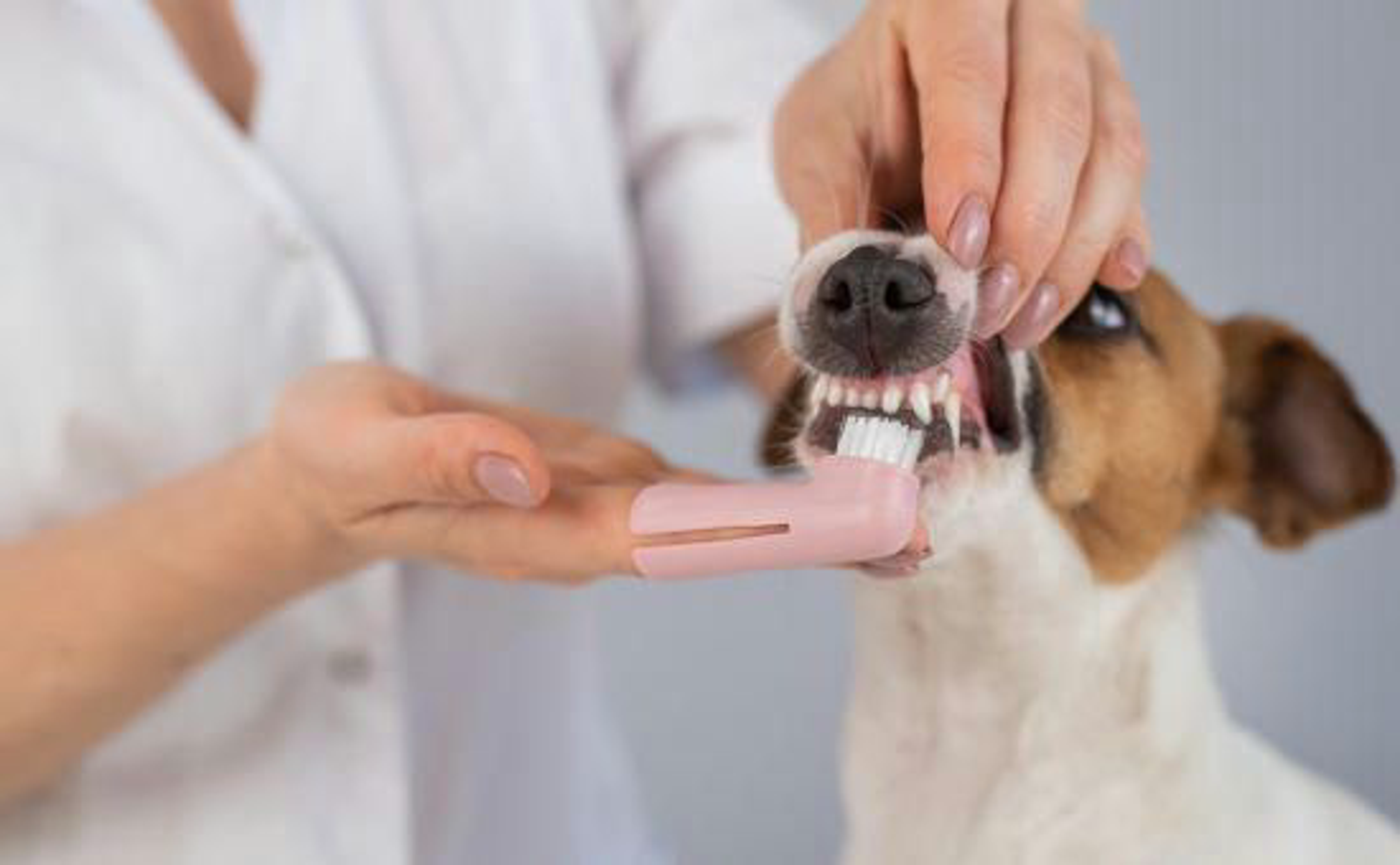
Credit: www.green-petfood.com
Step-by-step Brushing Guide
Brushing your dog’s teeth might feel tricky at first, but breaking it down into clear steps makes the process smoother for both of you. The key is to get your dog comfortable and then use the right techniques to clean effectively. Let’s walk through the essential actions to help you brush your dog’s teeth confidently.
Positioning Your Dog
Find a quiet, comfortable spot where your dog feels relaxed. Sitting on the floor or in a chair can work well—make sure you’re at eye level with your dog to keep things calm. Gently hold your dog’s head or muzzle to steady it without causing stress.
Have you noticed how your dog reacts when you try to hold their head? Adjust your grip if you sense discomfort, aiming for a gentle touch that keeps them still but not scared. Sometimes, brushing after a walk or playtime helps because your dog is naturally more relaxed.
Brushing Techniques
Use a soft-bristled toothbrush designed for dogs or a finger brush for better control. Apply a small amount of dog-safe toothpaste—never use human toothpaste, as it can be harmful. Start by brushing in small circles, focusing on the outer surfaces of the teeth.
- Brush gently to avoid hurting your dog’s gums.
- Use a calm, steady motion to build trust.
- Brush for about 30 seconds on each side, increasing time as your dog gets used to it.
Have you tried praising your dog or offering treats during brushing? Positive reinforcement can turn this into a pleasant routine rather than a battle.
Areas To Focus On
Pay special attention to the back molars and the gum line, where plaque tends to build up the most. These spots are often missed but can lead to dental problems if ignored. Don’t forget to brush the front teeth and canines, but be extra gentle around sensitive areas.
If your dog shows resistance in certain spots, spend a little more time there next session, but never force it. Gradual progress often leads to better results and a happier dog.
Making Brushing A Routine
Brushing your dog’s teeth regularly is key to keeping their mouth healthy and avoiding costly vet visits. Turning this task into a routine helps your dog get comfortable with the process and reduces stress for both of you. The challenge lies in making brushing a natural part of your daily life without it feeling like a chore.
Establishing A Schedule
Pick a time that works best for you and your dog, such as right after a walk or before bedtime. Consistency is crucial, so try to stick to the same time each day. Dogs thrive on routine, and knowing what to expect will make them less resistant.
Start with short sessions and gradually increase the brushing time. Even just a minute or two daily can make a big difference. Have you noticed how your dog’s mood changes when you brush at random times versus a set schedule?
Encouraging Positive Reinforcement
Reward your dog immediately after brushing to build a positive association. Use treats, praise, or playtime—whatever motivates your dog the most. This helps your dog look forward to brushing instead of dreading it.
If your dog shows resistance, break the process into smaller steps and reward each success. For example, start by letting your dog taste the toothpaste, then reward. Next, touch their teeth gently with your finger, followed by brushing.
Have you tried mixing praise with treats to see which works better? Sometimes, a simple “good boy” or “good girl” spoken warmly can be more effective than a treat. The key is to make brushing feel like a positive experience every time.
Signs Of Oral Health Issues
Recognizing the signs of oral health issues in your dog is crucial for maintaining their overall well-being. Dogs can’t tell you when their teeth hurt or when something feels off, so you need to be their voice. Paying attention to specific symptoms can help you catch problems early before they turn into painful or expensive conditions.
Common Symptoms To Watch
Keep an eye out for any changes in your dog’s mouth or behavior that might indicate dental trouble. Some common symptoms include:
- Bad breath:A persistent foul odor can signal infection or decay.
- Red or swollen gums:Inflammation often points to gingivitis or periodontal disease.
- Excessive drooling:More saliva than usual can be a sign of oral pain.
- Difficulty eating or chewing:If your dog drops food or avoids hard treats, something might hurt.
- Loose or broken teeth:Visible damage or wobbly teeth need immediate attention.
- Bleeding gums:Bleeding during or after brushing is not normal and should be checked.
- Pawing at the mouth:This behavior may indicate discomfort or pain.
Have you noticed any of these signs in your dog? Even subtle changes can mean your pet needs help.
When To Consult A Veterinarian
Not every symptom requires an emergency visit, but some definitely call for professional advice. If your dog shows persistent bad breath or swollen gums for more than a few days, it’s time to schedule a vet appointment.
Also, sudden changes in eating habits or visible tooth damage should never be ignored. Your vet can perform a thorough dental exam and may recommend cleaning or treatment to prevent further issues.
Don’t wait until your dog is in obvious pain. Early intervention can save you from bigger problems down the road. What’s the last time you had your dog’s teeth checked by a professional?
Alternative Dental Care Options
Alternative dental care options support your dog’s oral health beyond brushing. These methods help reduce plaque and keep teeth strong. They offer practical ways to maintain dental hygiene for pets that resist brushing.
Dental Chews And Toys
Dental chews and toys clean teeth as dogs chew on them. Chewing helps scrape off plaque and massage gums. Choose chews designed for dental health with safe ingredients. Toys with textured surfaces reach between teeth to remove debris. Regular use reduces bad breath and lowers tartar buildup.
- Select size-appropriate chews to avoid choking risks.
- Look for products approved by veterinarians.
- Monitor your dog to prevent swallowing large pieces.
Professional Cleanings
Professional cleanings by a vet remove deep plaque and tartar. These cleanings reach spots brushing and chews can miss. A vet examines teeth for problems during the cleaning. The procedure usually requires anesthesia for safety and thoroughness. Schedule cleanings based on your vet’s advice and your dog’s needs.
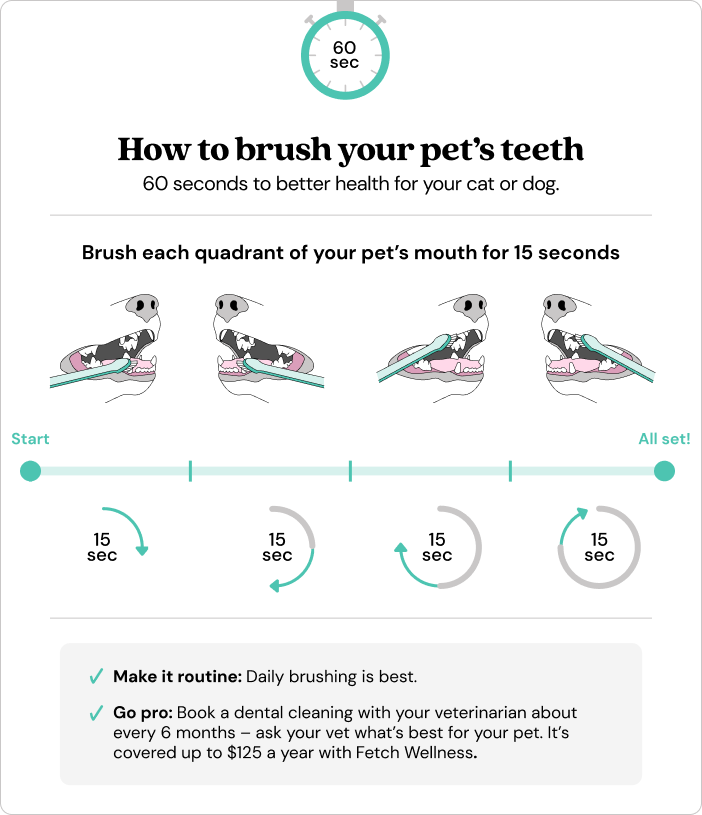
Credit: www.fetchpet.com
Frequently Asked Questions
How Often Should I Brush My Dog’s Teeth?
Brush your dog’s teeth at least 2-3 times a week. Daily brushing is ideal for optimal oral health and preventing plaque buildup.
What Type Of Toothbrush Is Best For Dogs?
Use a soft-bristled toothbrush or a finger brush designed for dogs. These tools clean effectively without hurting your dog’s gums.
Can I Use Human Toothpaste For My Dog?
No, human toothpaste contains harmful ingredients for dogs. Always use toothpaste specially formulated for dogs to ensure safety.
How Do I Get My Dog Used To Teeth Brushing?
Start slowly by letting your dog taste the toothpaste. Gradually introduce the toothbrush and reward your dog for calm behavior.
Conclusion
Brushing your dog’s teeth keeps their mouth healthy and clean. It helps stop bad breath and tooth pain. Start slow and be gentle to build trust. Use a dog-friendly toothbrush and toothpaste every day. Regular brushing can prevent costly vet visits later.
Your dog will feel better and smile more. Remember, small steps lead to big results. Keep brushing simple and part of your routine. Healthy teeth mean a happy dog.

Emily Barker is the founder of ChillDogLife.com, a space dedicated to helping pup parents discover the best dog products, lifestyle tips, and cozy ideas for happier homes.
A lifelong dog lover, Emily combines her passion for pets with a knack for research to share trusted recommendations on everything from toys and furniture to health and everyday care.
Her goal is simple: to make life easier, stylish, and more joyful for dogs and the people who love them.
